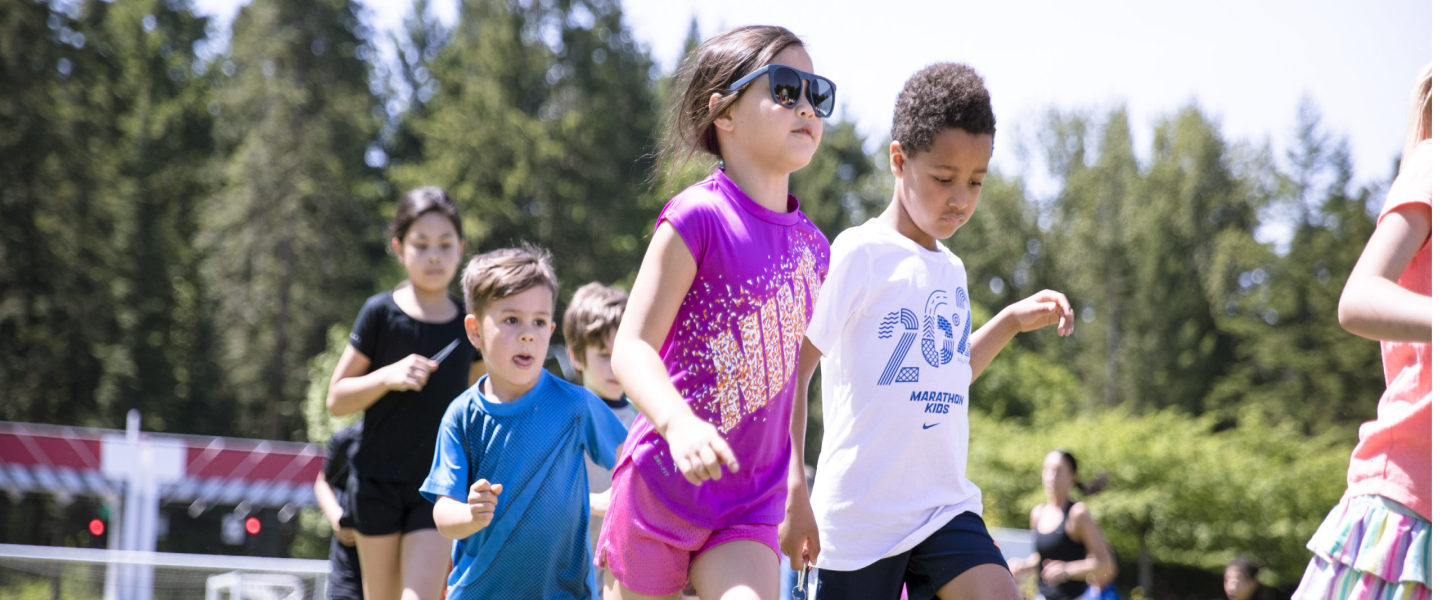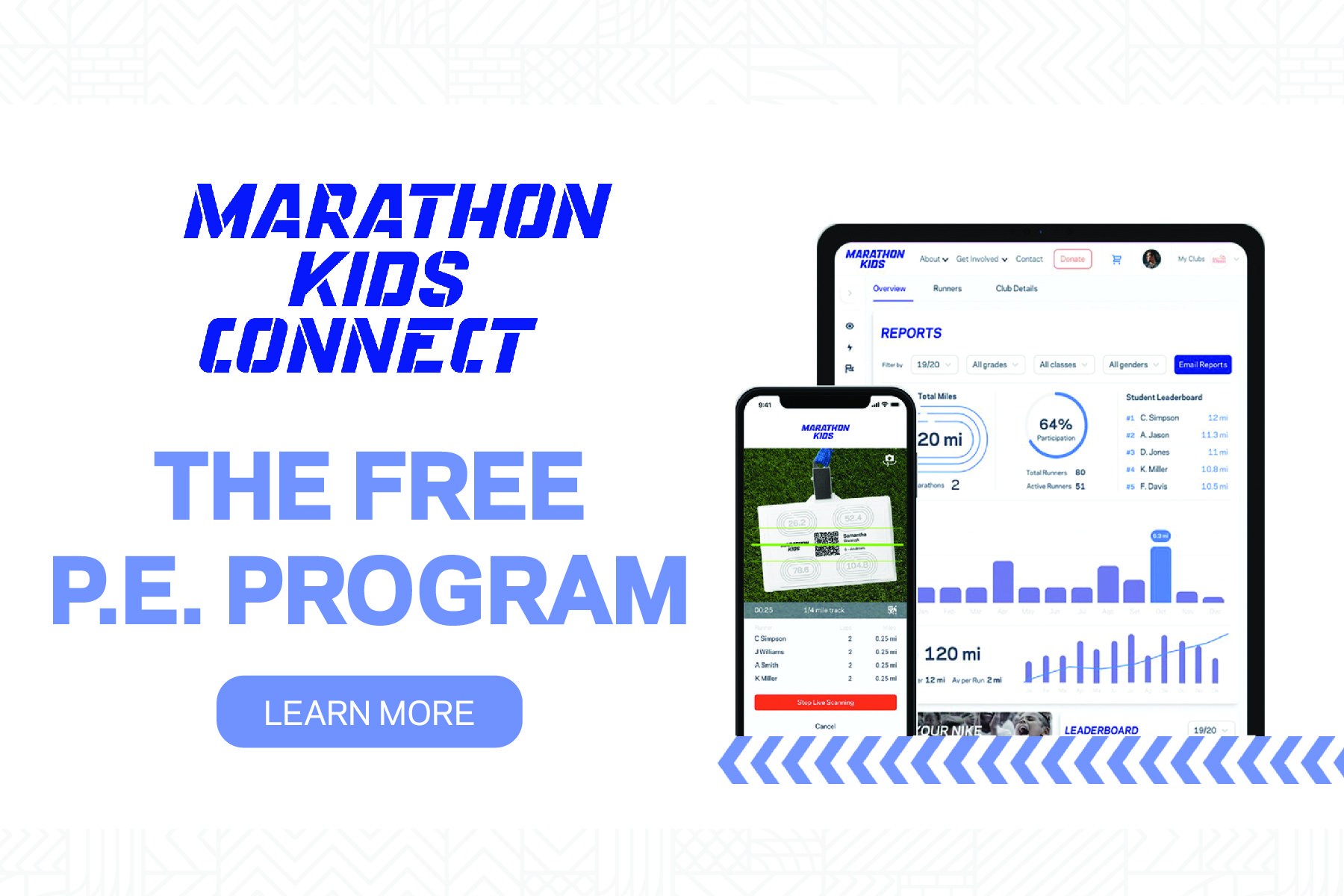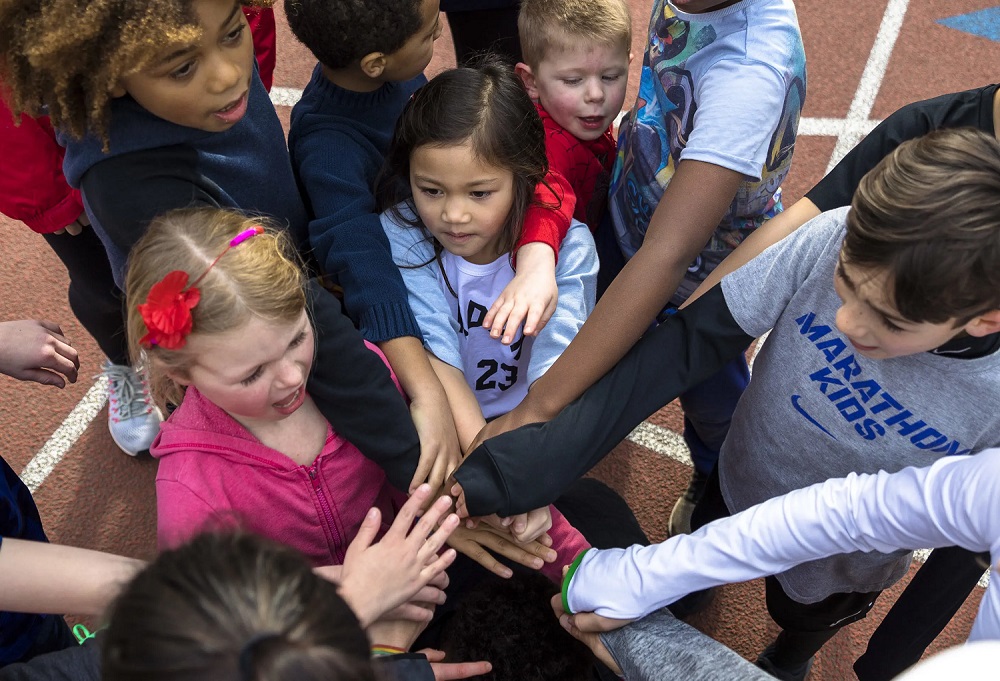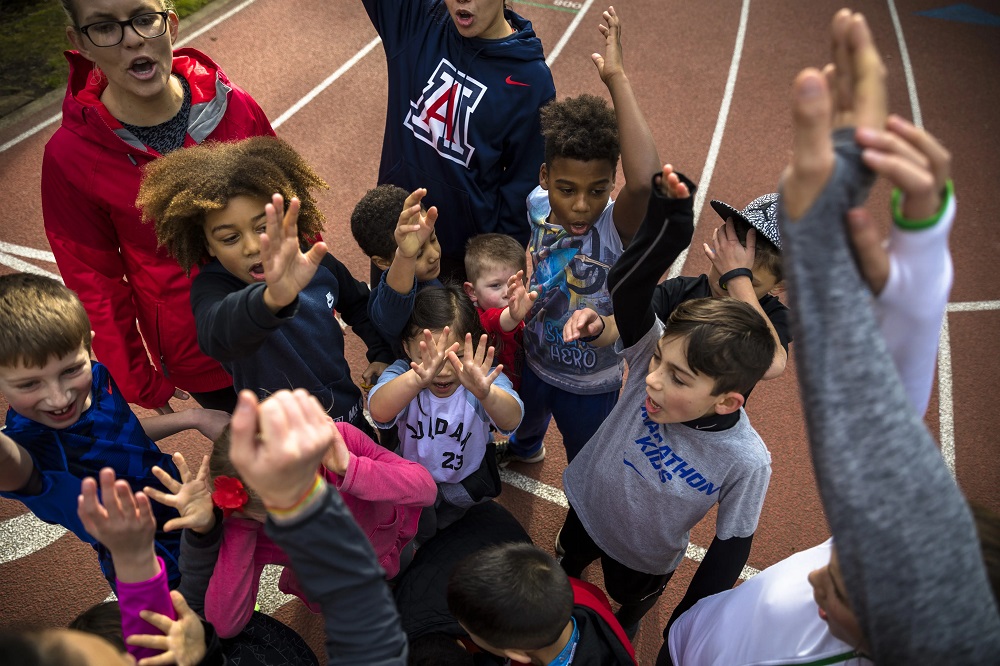
Best Adapted and Inclusive PE Games
Looking for the best adapted and inclusive PE games for your students? Adapted physical education involves PE games and activities that have been modified to accommodate students with disabilities or who have gross motor delays.
We applaud PE teachers, run club coaches and schools looking for ways to provide a more inclusive physical education curriculum for diverse groups of students! After all, students with physical or other disabilities are, first and foremost, students. The following PE games, activities and modification strategies are great for groups of students with varying needs and abilities.
Best Adapted and Inclusive PE Games
Activity: Dance Warm-Up
Kids can warm up together for PE class or run club by moving their bodies to music. (Arms, legs, hands, feet and heads all count!) Everyone can first stretch their limbs as a group, and then perform any of the following that they are able to do: waving their arms, bending their knees, rotating their hands, feet and necks, touching their toes, doing jumping-jacks or clapping their hands, and so on. You can incorporate learning about the different muscles by having students call out muscle names, clapping with each one; those who are able can also touch those muscles on their own bodies, such as their biceps, pectorals and quadriceps. Younger students can also have fun warming up their bodies and voices at the same time by roaring and baring their “claws,” making bird squawks while flapping their “wings,” or barking or meowing while crawling on all fours.
Game: Life-Sized Chutes and Ladders
While this game requires a fair amount of equipment and setup, it’s fun for players of all ages and abilities, and a great choice for giving students practice in taking turns while developing their fitness skills.
Lay out a long rope (or series of ropes) on the floor of the gym, arranging it in a path with several straight sections as well as a few bends to change the path’s direction. Then, lay hula hoops interspersed with foam squares along the path, and set cones — weighted, if possible — at each turning point of the rope.
Similar to the board game, players take turns by rolling foam dice and then moving that number of hula hoop/foam square “spaces” along the path. Students with impaired vision can use the rope as a guide, while students on foot or in wheelchairs can step or hop in the hoops or wheel alongside them. Landing on a square sends the player back to the start; the first player to reach the end of the rope path wins. Players can also buddy up and assist each other to the finish line.
Activity: Obstacle Course
Students of all abilities can work in pairs to navigate an obstacle course complete with scooters for pulling each other along, hula hoops for stepping or crawling through, ropes laid out on the floor to create a path to follow, a parachute for whole-group play, and more.
Game: Balloon Polo
Students can use pool noodles to tap balloons, keeping them aloft in the air. They can divide into teams, set up goals (hula hoops and large open boxes both work great), and follow basic rules about passing to teammates, making goals, scoring points, and what to do when the balloon touches the ground.
Game: Soccer
Adapting classic team sports like soccer involves making simple shifts, such as having students walk or wheel instead of run; reducing the size of the playing field and clearly delineating boundaries; and using a larger, softer or lighter-weight ball instead of a traditional soccer ball. Players can also be allowed to use their hands in order to hit the ball or pass it to a teammate. Players in wheelchairs can hold the ball on their laps while they wheel across the playing space. (Note that similar adaptations can apply to other classic team sports such as basketball, softball and more.)
Activity: Cultivate Mindfulness
PE teachers and coaches know that mindfulness plays an important role in physical education, and it can also have a positive effect on students’ academics as well as their moods and self-confidence. Best of all, students of all abilities can practice mindfulness, cultivate related skills and reap the benefits.
Start with one of the simplest mindfulness activities: counting your breaths as you breathe slowly in and out as a group. Another great and simple activity involves taking slow, deliberate breaths as you talk your students through relaxing each major muscle group, starting with the head and neck and working downward.
Game: Bowling
Adapted bowling is fun and easy for students of all abilities, and it’s simple to set up. Stretch exercise bands between the legs of a chair or desk so that students can use their hands or feet, or enlist a partner, to slingshot a ball across the floor toward bowling pins. Balls can be foam, yarn or any other type that is appropriate for your students; pins can be plastic cones, blocks, smaller balls, or anything else that works. For students with visual impairment, use tape on the floor to mark off the optimal path for the ball.
General Adaptive Strategies










ABOUT MARATHON KIDS
Marathon Kids is on a mission to get kids moving. The nonprofit organization offers free physical education programming through Marathon Kids Connect, a cloud-based PE and run club management platform that includes a mobile app for digital activity-tracking.


